Details
PV - Panels
Here we have two opportunities in terms of the electric circuitry and the companies KIOTO or ENERGETICA:
For the variant 1: 10 Kioto modules (220W MONO KPV 220 ME) will be taken. The charging controller requires 24 DC volts.
The solar panels have a MPP voltage of 25.99 volts. But the panels provide this MPP voltage only in the perfect module angle and by maximal solar radiation.
But the panels were installed in the worst angle. So the panels will only supply about 17 volt. You will see that 17 volt is not enough for the charging controller, because the controller needs 24 volts.
The solution of this problem is that the 10 solar panels get interconnect into a serial and a parallel circuit. That means that two panels get serial and the other panels will interconnect parallel.
Through this wiring of the panels the MPP voltage will increase from 25, 99 volt to 51, 98 volt.
With this MPP voltage and the bad module angle the panels will produce more than 24 volt.
Then the charging controller gets enough voltage to work with the highest efficiency.
For the variant 2: 7 Energetica modules (E-2000M) will be taken. This variant includes an inverter and a charging controller. The charging controller requires 230 AC volts.
The function of the inverter is to transform the DC voltage from the panels into an AC voltage for the charging controller. In this variant the charging controller needs 230 AC volts.
The Energetica solar panels have a MPP voltage of 30,22 volts. But the panels provide this MPP voltage only in the perfect module angle and by maximal solar radiation.
But these panels are also installed in the worst angle. So the panels will only supply about 24 volt. In this case 24 volt is enough for the inverter, because the inverter has a hysteresis form 18 to 32 volts. That means that the voltage from the panels should be in this area.
You see that the solar panels will require 24 volts and these 24 volts are enough for the inverter.
Because the PV-plant produces enough voltage it is not necessary to interconnect some panels in a serial circuit. So all 7 solar panels are interconnect into a parallel circuit. Through this wiring of the panels the capacity of the solar panels will increase from 250 W to 1750 W.
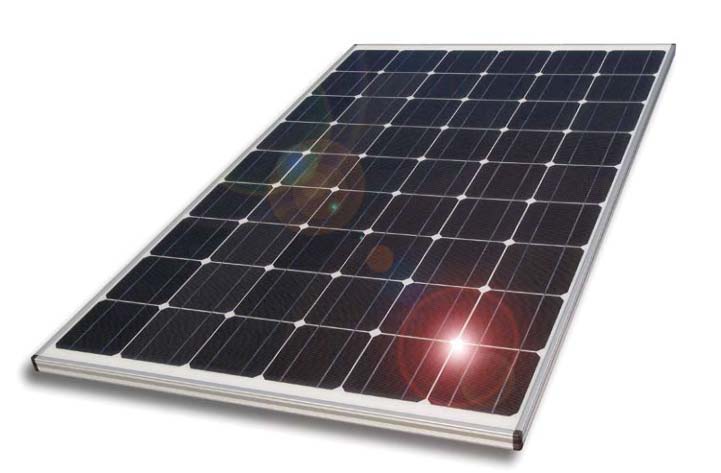 |  | 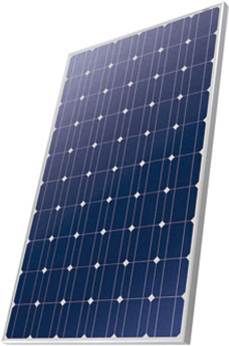 |  |
Batteries
Here it is also to distinguish between Lithium-Ion- and Plumb-Batteries:
AGM-Batteries:
General:
“AGM” is the short description for absorbent glass mat. That is a plumb-battery execution, by which the electrolyte is bound in a fleece made of glass fibre. These executions deliver equal currents like open lead batteries. They have the advantage that no acid runs out. That’s the reason why these batteries are nearly perfectly for the case on water.
Principle:
A plumb accumulator consists basically of acid resistance housing and two different lead groups. One of these two lead groups is positive and the other is negative. The electrolyte is a 38 percentage sulphuric acid. By the “AGM” execution is the acid bound in a fleece of glass fibre. You use perforated and corrugated polyvinyl chloride as separator at the most cases. This separator prevents against a direct connection -> against short circuits. The connections and the connecting lungs consist in the most cases of metallic lead.
Lithium-Ion-Batteries:
General:
Lithium-ion accumulators have a high energy-dense. That’s the reason why they so often used in mobile equipment. Other kinds of accumulators can’t be used for mobile equipment because of the low energy-dense. Moreover the lithium-ion accumulators are thermally stable and they are don’t be subjected to a memory-effect. That’s the reason why they have such a good number of cycles.
Principle:
The electrical energy is stored by the lithium-ion batteries in a chemical process. This storing process happened by the lithium-ion-atoms (negative electrode) and by the transition metal ions (positive electrode). By the lithium-ion batteries the lithium is able to walk in ionized form between the electrodes. That’s the reason why the lithium-ion battery has it name.
This lithium-ion flow is necessary for the compensation of the external current flow by charging and discharging that the electrodes stay neutral. The lithium-ions atoms give off one electron by the each electrode. The electron flows to the positive electrode across the external current flow. At the same time walk the same number of lithium-ions through the electrolytes from the negative to the positive electrode. The lithium-ion doesn’t record the electron by the positive electrode. The strong ionized transition metal ions record the electron. The transition metal ions are also called “electro hungry”.
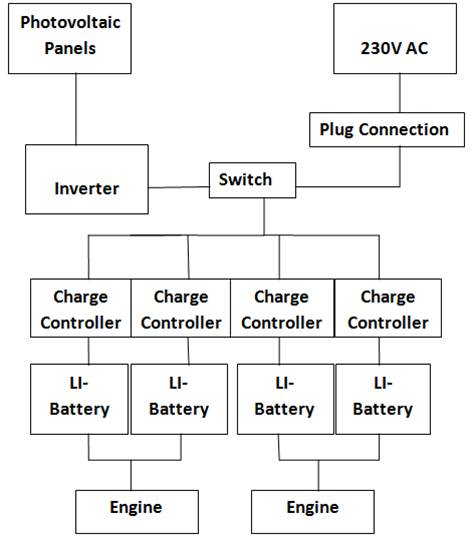 | 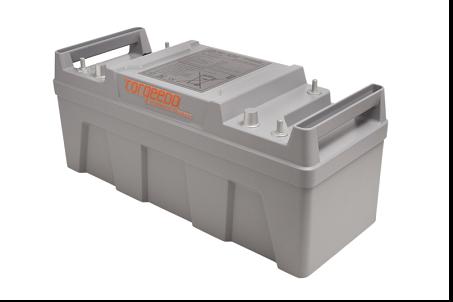 | 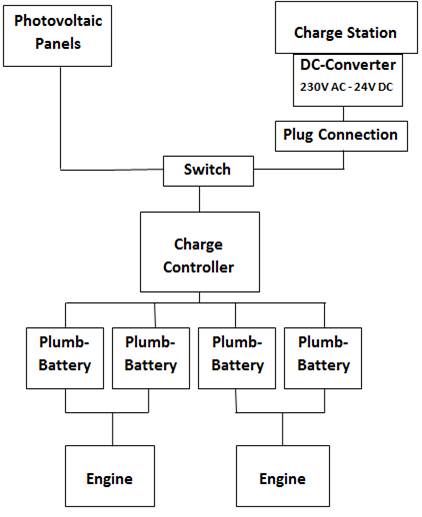 | 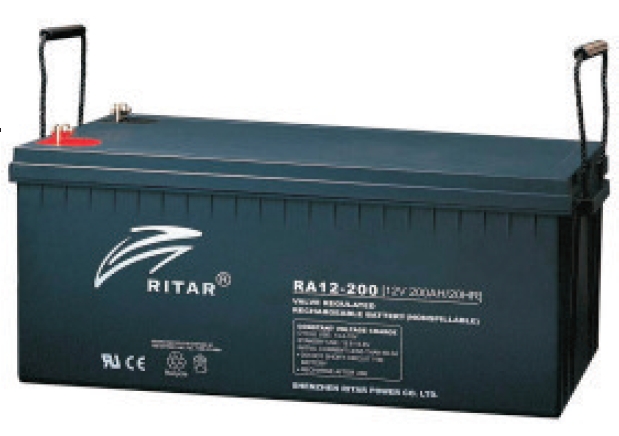 |
Engines
There are two variants possible: Torqeedo Twin Cruise 2.0R or Torqeedo Cruise 4.oR
Torqeedo Twin Cruise 2.0 R:
Facts:
Engine Power: 2 x 2,2 kW
Voltage: 24 V DC (24 V for each engine)
Weight: 33,6 kg
Torqeedo Cruise 4.0 R
Facts:
Engine Power: 4,4 kW
Voltage: 48 V DC
Weight: 17,1 kg
Summary:
The better variant for the installation on the boat will be the Twin Cruise 2.0 R, because it needs 24V battery voltage and that is ideal for our boat lightening.
There is only one disadvantage – the price. The Twin Cruise 2.0 R with the price of 5898€ is about 2549€ more expensive than the Cruise 4.0 R with the price of 3349€.
The main reason for this difference is the number of the engines needed.
Details:
Components:
A Twin Cruise outboard system consists of the two Cruise models as well as the Twin Cruise Control Set. These Twin Cruise Control Set otherwise consists of a dual throttle as well as a connection bar to connect the two Cruise outboards to the same standard steering system.
Information display:
The computer integrated in the remote throttle control analyses and combines information received from the motor, the batteries and GPS. The motor-consumption and GPS-speed data are always accurate. The battery information is fairly accurate if the Twin Cruise is operated together with Torqeedo’s Power batteries, as these products communicate with each other. If the Twin Cruise is operated with other batteries, like AGM batteries, the battery information is based on estimates derived from battery information entered into the system in the setup-menu.
This on board information display shows the battery charge status, the remaining range, the speed over ground and the input power.
A big disadvantage is, that we can’t use this information display if we will take the AGM batteries, because these ones don’t have the data ports to connect it.
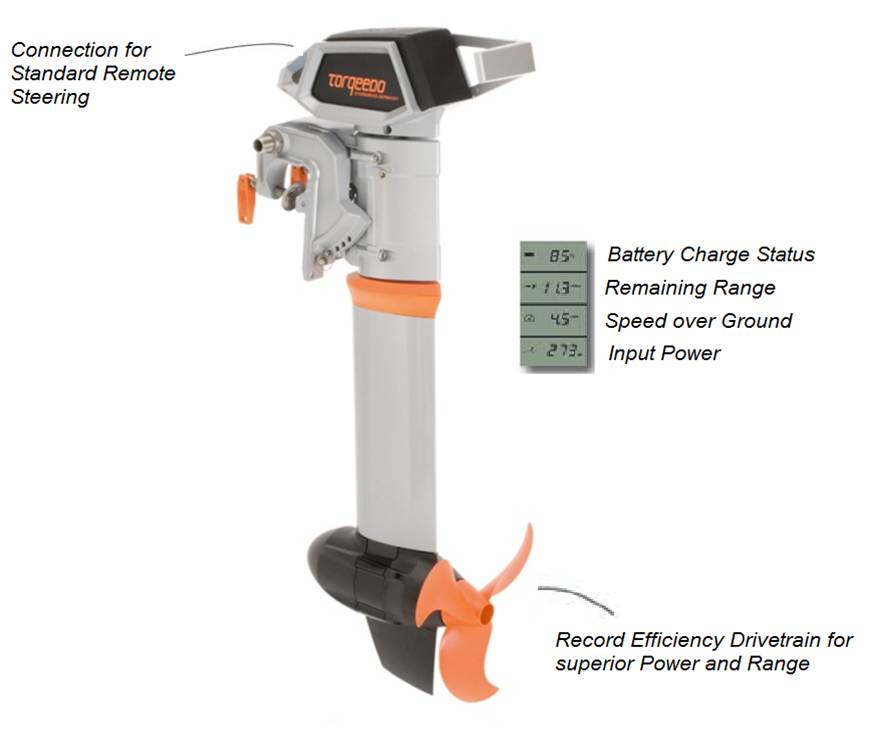 | 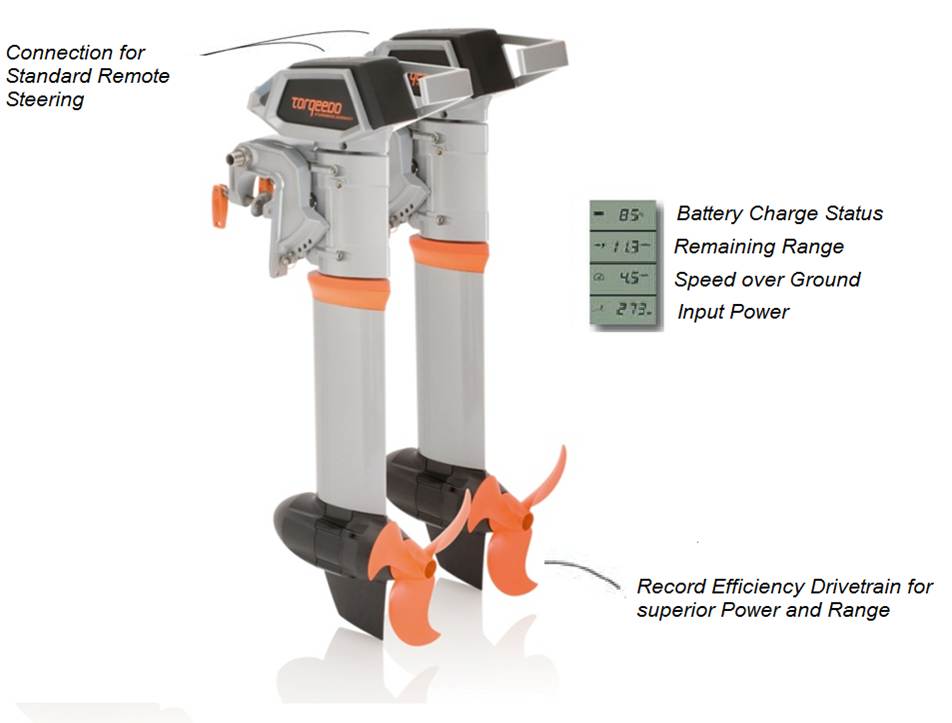 |  |